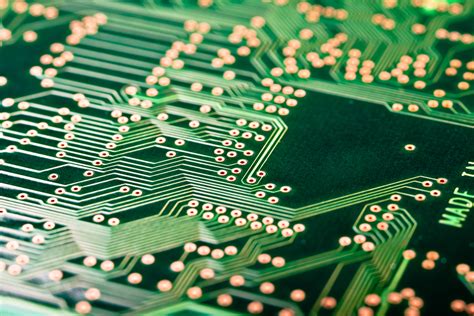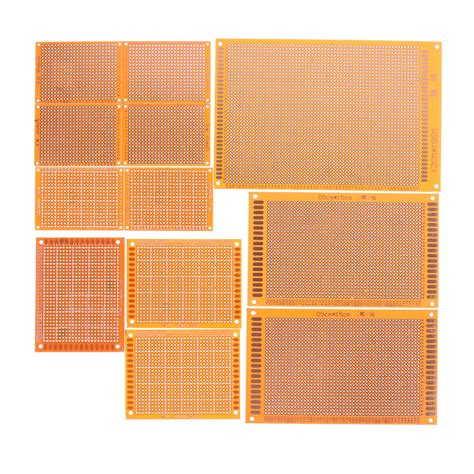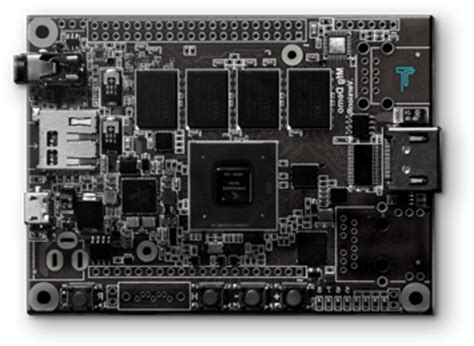Difference between hdi and hdr
Understanding The Basics: HDI Vs. HDR
Understanding the basics of HDI and HDR is essential for anyone interested in the fields of development and technology. Although these acronyms may appear similar, they represent fundamentally different concepts.
HDI, or Human Development Index, is a composite statistic used to rank countries based on human development levels.
On the other hand, HDR, or High Dynamic Range, refers to a technology used in imaging and photography to produce a greater range of luminosity than standard digital imaging techniques.
To begin with, the Human Development Index (HDI) is a measure developed by the United Nations to assess the social and economic development levels of countries. It takes into account three primary dimensions: life expectancy at birth, education level, and per capita income. By combining these factors, HDI provides a comprehensive overview of a country’s development status. For instance, a high HDI score indicates a high standard of living, better educational opportunities, and longer life expectancy. Conversely, a low HDI score suggests that a country faces significant challenges in these areas. This index is crucial for policymakers and researchers as it helps identify areas needing improvement and facilitates the allocation of resources to enhance human development.
In contrast, High Dynamic Range (HDR) is a technology that enhances the quality of images and videos by expanding the range of contrast and color.
Traditional imaging techniques often struggle to capture the full spectrum of light and dark areas in a scene, leading to images that may appear washed out or lacking in detail. HDR technology addresses this issue by capturing multiple exposures of the same scene and combining them to produce a single image with a broader range of luminosity. This results in more vibrant colors, deeper blacks, and brighter whites, thereby creating a more lifelike and immersive visual experience. HDR is widely used in various applications, including photography, television, and gaming, to deliver superior image quality.
While HDI and HDR serve different purposes, they both play significant roles in their respective fields.
HDI is instrumental in understanding and improving human development, providing a valuable tool for assessing the progress of nations. It highlights disparities and helps in formulating strategies to address issues such as poverty, education, and healthcare. On the other hand, HDR technology has revolutionized the way we capture and view images, offering a more realistic and engaging visual experience. It has become a standard feature in modern cameras, televisions, and smartphones, enhancing the quality of visual content across various platforms.
Moreover, it is important to note that the impact of HDI extends beyond mere statistics.
It influences global policies and initiatives aimed at improving the quality of life for people around the world. For example, countries with low HDI scores may receive international aid and support to address their developmental challenges. Similarly, HDR technology has far-reaching implications in the entertainment industry, where it has set new standards for visual excellence. The adoption of HDR in filmmaking and broadcasting has led to a more immersive viewing experience, captivating audiences with stunning visuals.
In conclusion, while HDI and HDR may share similar acronyms, they represent distinct concepts with unique applications. HDI focuses on measuring and improving human development, providing a comprehensive overview of a country’s progress in key areas. In contrast, HDR technology enhances the quality of images and videos, offering a more dynamic and realistic visual experience. Understanding the differences between these two concepts is crucial for appreciating their respective contributions to the fields of development and technology.

Key Technological Differences Between HDI And HDR
High-Density Interconnect (HDI) and High Dynamic Range (HDR) are two distinct technological advancements that have significantly impacted their respective fields. While HDI pertains to the realm of printed circuit boards (PCBs) and electronics manufacturing,
HDR is a term more commonly associated with imaging and display technologies.
Understanding the key technological differences between HDI and HDR requires a closer examination of their definitions, applications, and the specific advancements they bring to their industries.
HDI technology is primarily concerned with the miniaturization and increased functionality of electronic devices.
It involves the use of advanced PCB designs that incorporate finer lines and spaces, smaller vias, and higher connection pad density. This allows for more components to be placed on a single board, thereby enhancing the performance and capabilities of electronic devices.
HDI PCBs are characterized by their use of microvias, blind vias, and buried vias, which enable more complex routing and interconnections.
These features are particularly beneficial in the production of compact and high-performance devices such as smartphones, tablets, and other portable electronics. The ability to integrate more components into a smaller area not only improves the functionality of these devices but also contributes to their sleek and lightweight designs.
In contrast, HDR technology is focused on improving the quality of visual content by enhancing the range of luminance and color that can be displayed.
HDR imaging captures and displays a wider range of brightness levels, from the darkest shadows to the brightest highlights, resulting in more realistic and vibrant images.
This is achieved through advanced algorithms and processing techniques that combine multiple exposures of the same scene. HDR displays, such as those found in modern televisions and monitors, utilize this technology to provide viewers with a more immersive and lifelike visual experience. The increased contrast and color accuracy offered by HDR make it particularly valuable in fields such as photography, cinematography, and gaming, where visual fidelity is paramount.
While both HDI and HDR represent significant technological advancements, their applications and impacts are quite different.
HDI’s primary contribution lies in the realm of electronics manufacturing, where it enables the production of smaller, more powerful devices. This has far-reaching implications for the development of consumer electronics, medical devices, and even aerospace technology. On the other hand, HDR’s main influence is in the domain of visual media, where it enhances the quality and realism of images and videos. This has transformed the way content is created and consumed, offering viewers a more engaging and visually stunning experience.
Despite their differences, both HDI and HDR share a common goal of pushing the boundaries of what is possible within their respective fields.
They each represent a step forward in the ongoing quest for innovation and improvement, driven by the demands of consumers and the relentless pace of technological advancement. As HDI continues to evolve, we can expect even more compact and efficient electronic devices, while the ongoing development of HDR promises ever-greater levels of visual realism and immersion.
In conclusion, the key technological differences between HDI and HDR lie in their respective focuses and applications. HDI is centered on the miniaturization and enhanced functionality of electronic devices through advanced PCB design, while HDR aims to improve the quality of visual content by expanding the range of luminance and color. Both technologies have made significant contributions to their fields, driving innovation and setting new standards for performance and quality.

Impact Of HDI And HDR On Visual Quality
The impact of High Dynamic Range (HDR) and High Definition Imaging (HDI) on visual quality is a topic of significant interest in the realm of modern display technologies. Both HDR and HDI have revolutionized the way we perceive visual content, yet they serve distinct purposes and offer unique enhancements to the viewing experience. Understanding the differences between these two technologies is crucial for appreciating their respective contributions to visual quality.
To begin with, High Definition Imaging (HDI) primarily refers to the resolution of the display.
HDI encompasses various resolutions, such as 720p, 1080p, and 4K, which denote the number of pixels on the screen. The higher the resolution, the more pixels are packed into the display, resulting in sharper and more detailed images. For instance, a 4K resolution, which contains approximately 8.3 million pixels, offers a significantly clearer and more detailed picture compared to a 1080p resolution, which has around 2 million pixels. This increase in pixel density enhances the overall visual quality by providing finer details and reducing the visibility of individual pixels.
On the other hand, High Dynamic Range (HDR) focuses on the contrast ratio and color accuracy of the display.
HDR technology enhances the range of luminance levels, allowing for brighter whites and deeper blacks. This expanded contrast ratio results in more realistic and vibrant images, as it more closely mimics the way the human eye perceives the real world. Additionally, HDR supports a wider color gamut, enabling the display to reproduce a broader spectrum of colors with greater precision. This results in more lifelike and immersive visuals, as subtle color variations and intricate details are more accurately represented.
While both HDI and HDR contribute to improved visual quality, they do so in different ways.
HDI enhances the clarity and detail of the image by increasing the resolution, whereas HDR improves the overall realism and vibrancy of the image by expanding the contrast ratio and color accuracy. It is important to note that these technologies are not mutually exclusive; in fact, they often complement each other. For example, a 4K HDR display combines the high resolution of 4K with the enhanced contrast and color accuracy of HDR, resulting in a superior viewing experience.
Moreover, the impact of HDI and HDR on visual quality extends beyond just the technical specifications.
The content being viewed also plays a crucial role. For instance, a high-resolution display will only be as good as the content it is displaying. If the content is not available in high resolution, the benefits of HDI may not be fully realized. Similarly, HDR content is necessary to take full advantage of an HDR display. As more content creators adopt these technologies, the availability of high-quality content continues to grow, further enhancing the viewing experience.
In conclusion, both High Definition Imaging and High Dynamic Range have significantly impacted visual quality, each in its own way. HDI improves the sharpness and detail of images through higher resolutions, while HDR enhances the realism and vibrancy of images through better contrast and color accuracy. Together, these technologies provide a more immersive and visually stunning experience, especially when supported by high-quality content. As display technology continues to evolve, the integration of HDI and HDR will likely become even more seamless, offering viewers an unparalleled visual experience.
Choosing Between HDI And HDR For Your Needs
When deciding between High-Density Interconnect (HDI) and High Dynamic Range (HDR) technologies, it is essential to understand their distinct functionalities and applications. HDI and HDR serve different purposes in the realms of electronics and visual media, respectively. Therefore, choosing the appropriate technology depends on the specific requirements of your project or usage scenario.
High-Density Interconnect (HDI) is a technology used in the manufacturing of printed circuit boards (PCBs).
HDI PCBs are characterized by their higher wiring density per unit area compared to traditional PCBs. This increased density is achieved through the use of finer lines and spaces, smaller vias, and higher connection pad density. HDI technology is particularly beneficial in applications where space is at a premium, such as in smartphones, tablets, and other compact electronic devices. The primary advantage of HDI is its ability to support more complex circuitry within a smaller footprint, thereby enabling the development of more compact and efficient electronic devices.
On the other hand, High Dynamic Range (HDR) pertains to the field of visual media, specifically in the context of imaging and display technology.
HDR enhances the contrast ratio and color accuracy of images and videos, providing a more realistic and immersive viewing experience. By capturing and displaying a broader range of luminance levels, HDR technology allows for greater detail in both the darkest and brightest parts of an image. This results in visuals that are more true-to-life, with richer colors and more nuanced shadows and highlights. HDR is particularly advantageous in applications such as photography, cinematography, and high-end display screens, where image quality is paramount.
When choosing between HDI and HDR, it is crucial to consider the specific needs of your project.
If you are working on the design and development of electronic devices where space efficiency and complex circuitry are critical, HDI technology would be the appropriate choice. The ability to incorporate more functionality into a smaller area can lead to significant advancements in device performance and miniaturization. For instance, in the development of wearable technology, HDI PCBs can facilitate the integration of multiple sensors and components within a compact form factor, enhancing the overall functionality and user experience.
Conversely, if your focus is on visual media and you aim to achieve superior image quality, HDR technology would be the more suitable option. The enhanced contrast and color accuracy provided by HDR can significantly improve the visual appeal of your content, making it more engaging and visually striking. This is particularly important in fields such as digital content creation, gaming, and professional photography, where the quality of visuals can greatly impact the audience’s perception and experience.
In conclusion, the decision between HDI and HDR should be guided by the specific requirements and goals of your project. HDI is ideal for applications that demand high-density circuitry and space efficiency, while HDR excels in scenarios where superior image quality and visual realism are essential. By carefully evaluating the unique advantages of each technology, you can make an informed choice that aligns with your project’s objectives and enhances its overall effectiveness.






